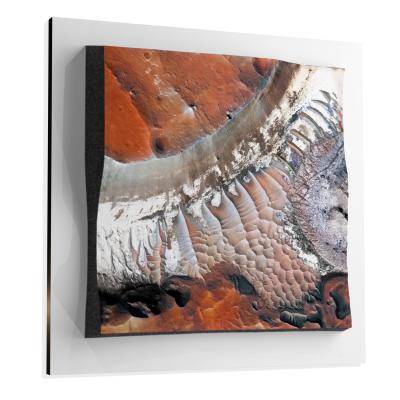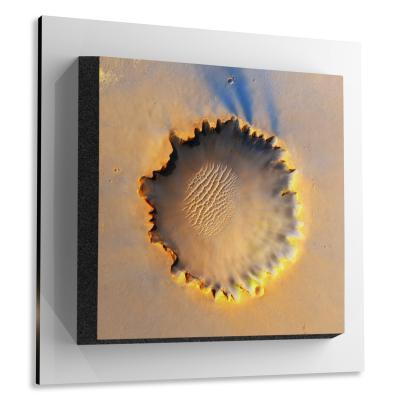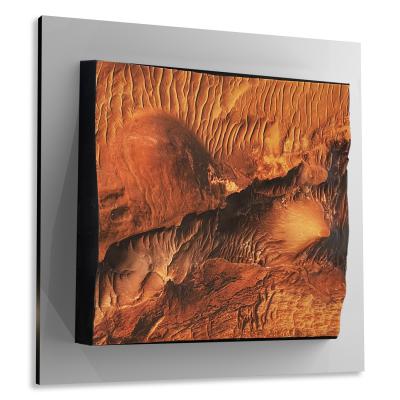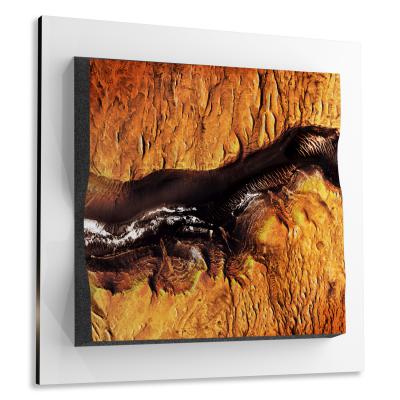Ganges Chasma
Ganges Chasma
We Build Custom 8K Mars Canvas Prints of Ganges Chasma
Did you know we make
custom
8K Mars Canvas Prints

and
3D Marscapes

Ganges Chasma
Ganges Chasma is one of the most fascinating geological formations on Mars, drawing attention from planetary scientists, geologists, and astrobiologists alike. Part of the colossal Valles Marineris canyon system, Ganges Chasma stands as a sentinel to the geological processes that have shaped the Martian landscape over billions of years.
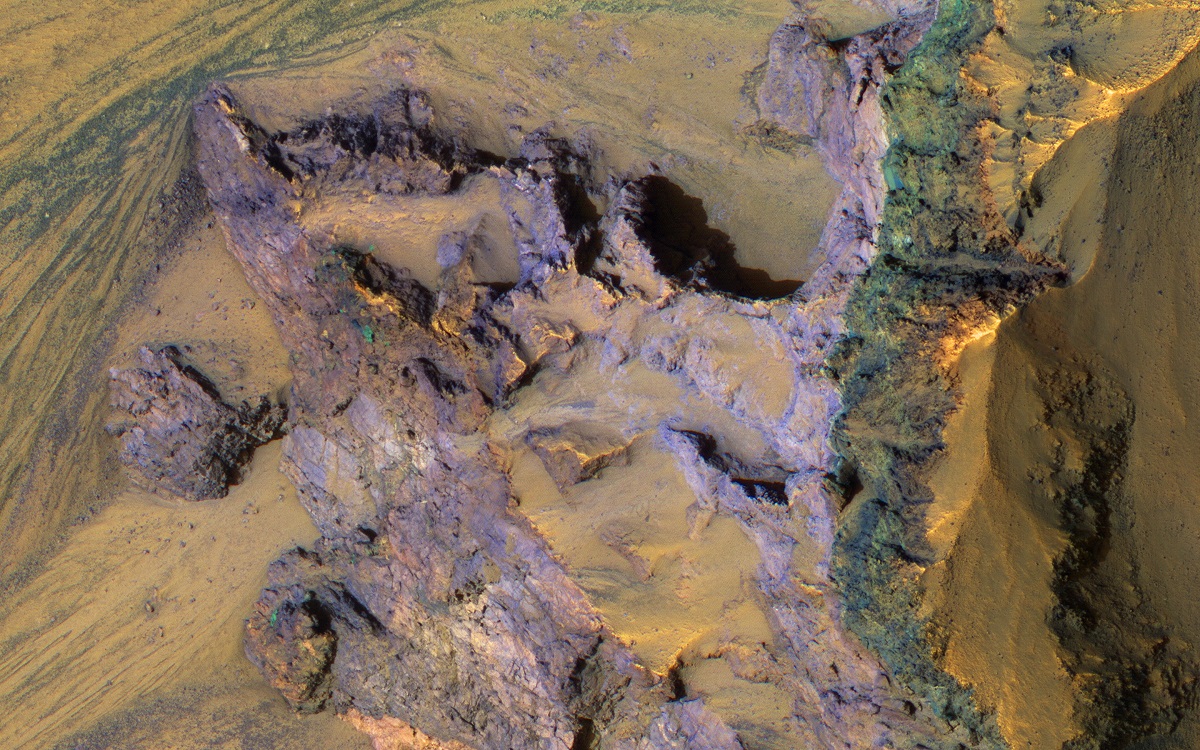 North Wall of Ganges Chasma
North Wall of Ganges Chasma
Geographical Location
Ganges Chasma is a significant geological feature strategically situated in the eastern part of Valles Marineris, one of the most expansive and intricate canyon systems in the solar system. It’s geographically positioned between 8°S and 13°S latitude and 52°E and 55°E longitude. The chasma itself stretches over an estimated 500 kilometers in length and varies in width from 2 to 5 kilometers. In terms of its depth, the chasma plunges to an astonishing 4 to 10 kilometers below the plateau that surrounds it. The geographical location of Ganges Chasma is highly remarkable as it serves as a critical intersection point between the volcanic Tharsis region to the west and the ancient, heavily cratered Martian highlands to the east. This pivotal location offers a unique, multi-faceted platform for understanding a wide array of geological phenomena, ranging from volcanic and tectonic activities to erosional processes, all of which have had a hand in molding the Martian landscape over aeons.
Advertisement
Sample Marscapes
Geological Composition
The geological composition of Ganges Chasma serves as a captivating window into the multifaceted geological history of Mars. The towering walls of the canyon are mainly formed of layers of basaltic rock, pointing to a history rich in volcanic activity. In addition to these basaltic layers, sedimentary rock formations have also been identified, and these could have been formed either through water-based (aqueous) or wind-based (aeolian) processes. Spectroscopic data has revealed an abundance of minerals, including clays, sulfates, and other hydrated minerals. These findings suggest that water likely played a significant role in the chasma’s history. The floor of Ganges Chasma is itself an intricate geological storybook, covered in enormous, well-preserved sedimentary deposits. These layers could have been laid down by mechanisms involving water, wind, or a synergistic combination of both. Notably, the patterns of layering point toward a complicated depositional history, marked by episodic flooding events and sediment accumulation over extended geological timescales.
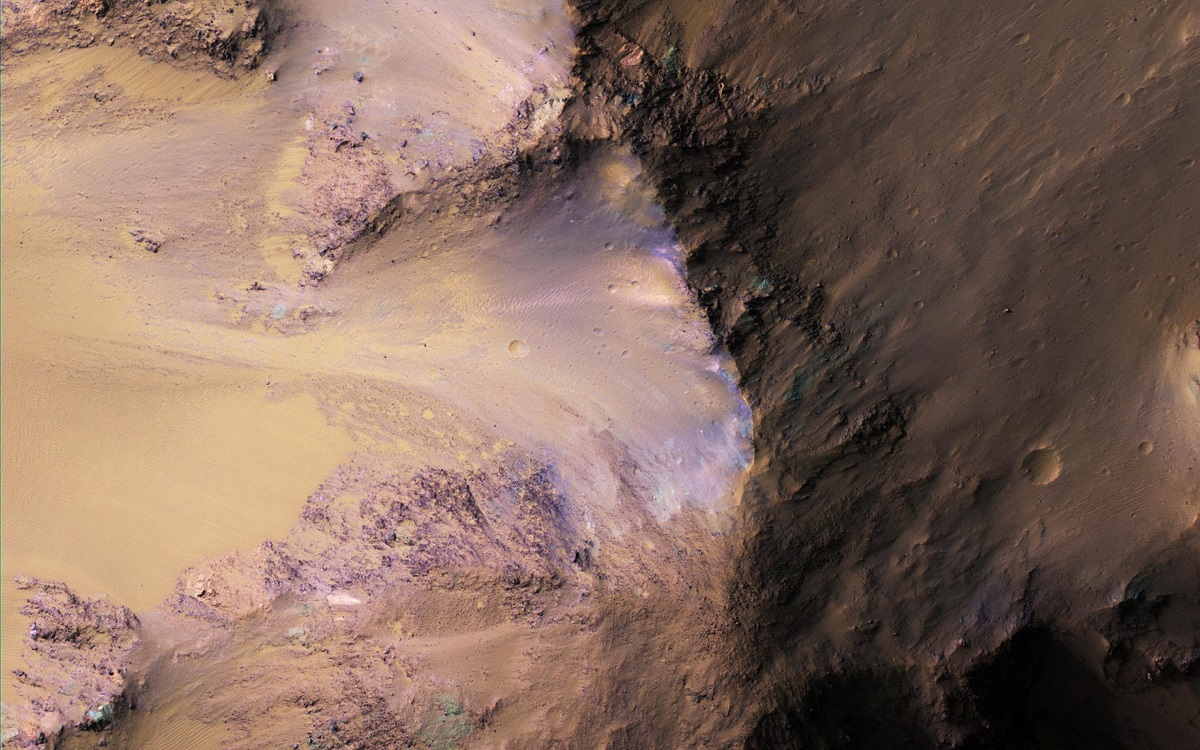 The Hills in Ganges Chasma
The Hills in Ganges Chasma
Significant Discoveries
Evidence of Ancient Water
One of the most revolutionary discoveries pertaining to Ganges Chasma has been the identification of clay minerals and sulfates through spectroscopic methods. These particular minerals are almost invariably formed in environments where liquid water was present, thereby supporting the hypothesis that this Martian canyon could have hosted water in its geological past.
Tectonic Activity
Another significant facet of Ganges Chasma is the intricate network of fault lines, fractures, and cracks that crisscross the region. These suggest a history of substantial tectonic activity. Some of the fault lines and fractures could even have a connection to the volcanic activities of the nearby Tharsis region, indicating a complex interplay between different geological forces.
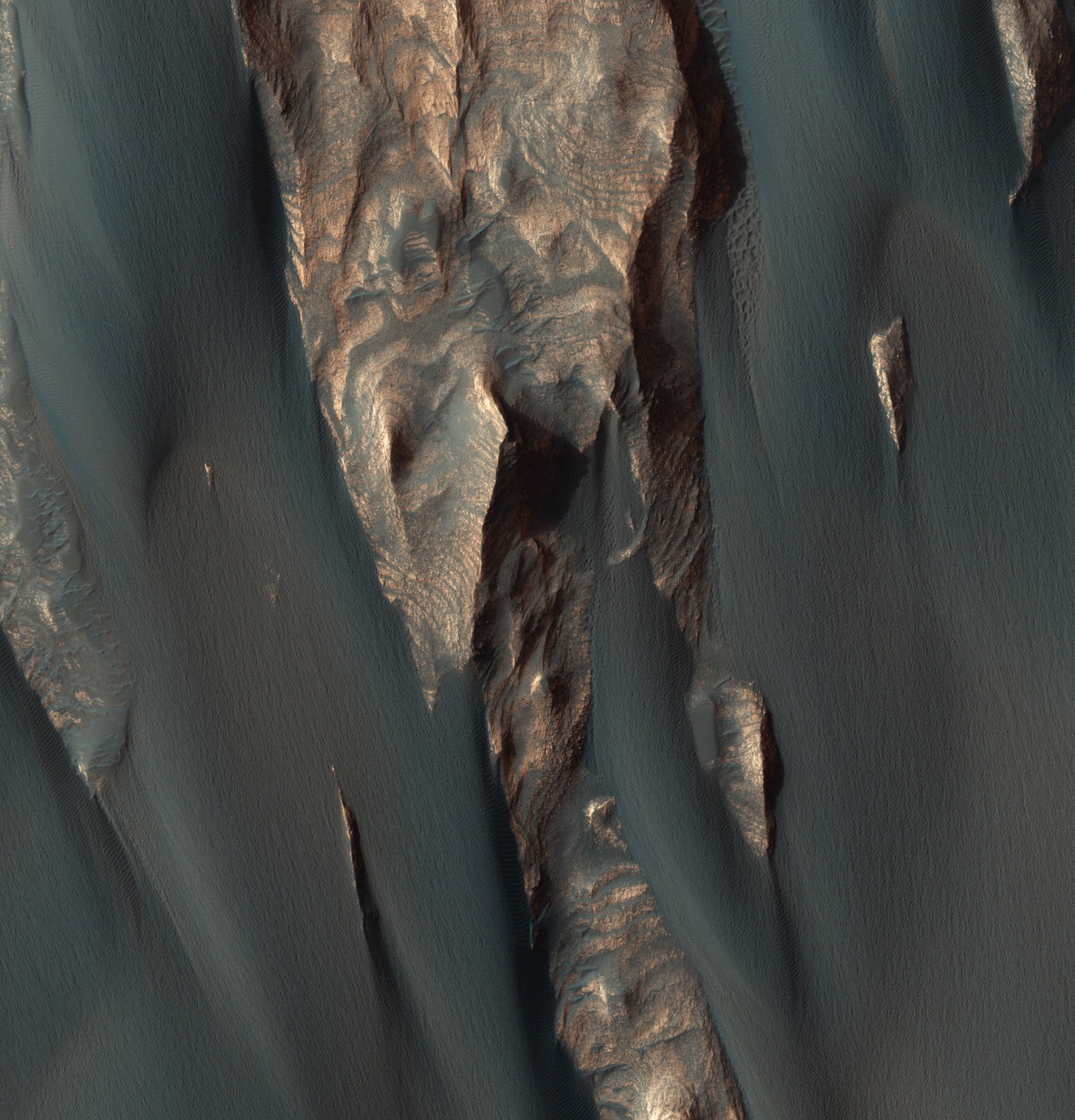 Windblown Sand in Ganges Chasma
Windblown Sand in Ganges Chasma
Scientific Missions
The exploration of Ganges Chasma has benefited immensely from a succession of robotic missions that have orbited Mars. Foremost among these is NASA’s Mars Reconnaissance Orbiter (MRO), which has delivered high-resolution imagery and critical mapping data. The European Space Agency’s Mars Express has also contributed significantly, offering crucial topographic data and enhancing our three-dimensional understanding of the chasm. Earlier missions, such as the Viking orbiters, laid the foundational groundwork for our current understanding of this intriguing geographical feature. Future rover missions are under consideration and, if approved, could provide invaluable ground-level data and samples, thus further enriching our comprehension of this Martian wonder.
Geomorphological Features
The geomorphology of Ganges Chasma is remarkably diverse, featuring an array of awe-inspiring landforms that contribute to its scientific allure. The chasma is characterized by towering cliffs that expose sequential layers of Martian geological history, providing a rare glimpse into Mars’ past. Additionally, the chasma floor is crisscrossed by an intricate network of channels, gullies, and canyons that hint at both erosional and depositional processes. The complex layering patterns visible in the walls of the canyon offer an unprecedented opportunity to study the sedimentary history of this part of Mars. Moreover, there are clear indications of massive landslides that have occurred in the past, possibly instigated by seismic activities. These have resulted in extensive debris fields that now litter various portions of the chasma floor.
Ganges Chasma remains a focal point for the study of Martian geology and possibly astrobiology. Its unique geological constitution, coupled with its spectacular geomorphological features, provides an unparalleled window into the Martian past. The evidence for ancient water bodies and tectonic activity makes it a prime candidate for future missions aimed at unraveling the Red Planet’s geological and potentially biological history. With upcoming missions and advancements in planetary science, Ganges Chasma is poised to remain at the forefront of Martian research.
Check out our 3D Mars Learning Center for more information on Mars and Ganges Chasma. You can also learn more at: NASA Mars Exploration.
More About Mars
Contact us today to learn more about our 3D services and how we can help you achieve your goals.


